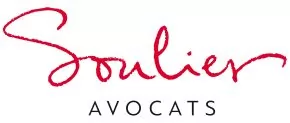On October 16, 2023, the Internal Market and International Trade committees of the European Parliament adopted their position on the future EU Regulation "on prohibiting products made with forced labor on the Union market" (the "Regulation").
This Regulation was proposed by the European Commission on September 14, 2022, with the aim of combating forced labor and promoting corporate sustainability standards.
On a global scale, the use of forced labor remains widespread, affecting some 27.6 million people worldwide, according to the International Labor Organization (the "ILO").
Still according to the ILO, forced labor can be defined as "all work or service which is exacted from any person under the threat of a penalty and for which the person has not offered himself or herself voluntarily."
The prohibition on placing on the EU market products made with forced labor will cover both products manufactured within the European Union (the "EU") and imported products.
While the prohibition of forced labor is already addressed in the proposal for a Directive on corporate sustainability due diligence, such Directive does not include specific measures to prevent products made with forced labor from being placed on the EU market.
In addition, there is currently no EU legislation that empowers Member States' authorities to directly detain, seize, or order the withdrawal of a product on the basis of a finding that it was made, whether in whole or in part, with forced labor.
The Proposed Regulation1 aims to strengthen the competent authorities' powers to investigate the relevant companies.
Firstly, the competent authorities will be tasked with carrying out a preliminary investigation phase to assess the likelihood that the relevant company has violated the law by placing on the market products made with forced labor.
Secondly, the competent authorities will be able to investigate these violations, and if it is proven that a company has used forced labor, imports and exports of the relevant products will be prohibited, and products already on the EU market will have to be donated, recycled, or destroyed.
The European Parliament has tightened up the Commission's proposal by shifting, in some situations, the burden of proof unto the relevant company which will have to demonstrate that the relevant products were not made, in whole or in part, by forced laborers. 2
Members of the European Parliament also wanted that the products withdrawn from the market be re-authorized only after the relevant company has demonstrated that it has stopped using forced labor in its operations or supply chain, and that all relevant forced labor cases have been remediated.
This article briefly describes the two stages of investigation provided for in the Commission's draft Regulation, as amended by Parliament, and recalls the applicable penalties.
The preliminary investigation phase
In order to be able to identify forced labor risk products, a methodology for detecting these risks is submitted to the competent authorities. Where it is established that a product has been produced using forced labor, the Regulation sets out deadlines for exchanges between the competent authorities and the relevant company which is referred to in the Regulation by the broader term "economic operator".
According to Article 4 of the draft Regulation, the competent authorities shall:
- follow a risk-based approach in assessing the likelihood that economic operators have violated the prohibition of products made with forced labor,
- focus their assessments on the economic operators involved in the steps of the value chain as close as possible to where the risk of forced labor is likely to occur, and take into account the size and economic resources of the economic operators, the quantity of products concerned, as well as the scale of suspected forced labor,
- request from the economic operators under assessment information on the actions taken to identify, prevent, mitigate or bring to an end risks of forced labor in their operations and value chains with respect to the products under assessment. Economic operators shall respond to the request of the competent authorities within 15 working days. Within 30 working days from the date of receipt of the requested information, the competent authorities shall conclude the preliminary phase of their investigation.
- duly take into account the steps taken by the relevant economic operator where the latter demonstrates that it carries out due diligence on the basis of identified forced labor impact in its supply chain, and that it has adopted suitable measures for bringing to an end forced labor within a short period of time.
If the competent authorities consider that there is no substantiated concern of a violation of the rules on products made with forced labor, they shall inform the relevant economic operator and shall not initiate an investigation.
By contrast, if they determine that there is a substantiated concern of a violation, they shall initiate an investigation.
In its proposed amendments, the European Parliament strengthened the Commission's role by adding that it can also initiate a preliminary investigation phase and monitor the procedure alongside the competent national authorities.
Above all, members of the European Parliament have amended the Commission's proposal to instruct the EU to draw up a list of geographical areas and economic sectors at high risk of forced labor.
Investigations
If an investigation is initiated as a result of substantiated suspicion of import or manufacture of products made with forced labor, the competent authorities shall inform the relevant economic operators concerned within 3 working days.
The relevant economic operators may then submit any relevant information required for the investigation, including information identifying the product(s) under investigation, the manufacturer or the producer of such product(s).
The competent authorities may carry out all necessary checks and inspections, including investigations in third countries, provided that the relevant economic operators give their consent and that the government of the Member State or third country in which the inspections are to take place has been officially notified and has not raised any objection.
The European Parliament has reversed the burden of proof for products produced in high-risk areas, by obliging the relevant economic operators to prove that the products have not been made, in whole or in part, with forced labor.
Decision of the competent authorities
At the end of the investigation, the competent authorities may decide to:
- prohibit the placing of the relevant products on the EU market and the export of such products,
- order the relevant economic operators to withdraw from the UE market the relevant products that have already been placed on the market.
Wherever an economic operator fails to comply with these obligations, the competent authorities shall ensure that the relevant products can no longer be available on the market.
The European Parliament added that if the relevant products are perishable, they shall be donated to charitable organizations. If they are not perishable, they shall be recycled.
The draft Regulation must now be discussed with the Council of the European Union before its adoption.
At the international level, in December 2021, the United States passed a similar law which bans imports of products containing components produced in the Xinjiang province, home to the Uyghur minority oppressed by the Chinese regime.
Footnotes
1. The European Commission's draft Regulation is available here: https://eur-lex.europa.eu/legal-content/EN/TXT/HTML/?uri=CELEX:52022PC0453
2. The draft Regulation amended by the European Parliament is available here: https://www.europarl.europa.eu/news/en/press-room/20231016IPR07307/towards-an-eu-ban-on-products-made-with-forced-labour
To read in French, please click here.
The content of this article is intended to provide a general guide to the subject matter. Specialist advice should be sought about your specific circumstances.

